"The linguistic roots of the Sri Lankan civil war
« previous post |
In the coverage of the civil war in Sri Lanka, I haven't seen much discussion of its linguistic aspects. In particular, the Sinhala Only Act of 1956 was a key event, whose causes and consequences are worth considering.
According to Michael Edward Brown and Sumit Ganguly, Fighting words: language policy and ethnic relations in Asia, 2003:
The passage of the Sinhala-Only Act of 1956 was a turning point in Sinhalese-Tamil relations. Tamil grievances subsequently grew because, in Sri Lanka as elsewhere, language policies had wide-ranging implications for educational and economic opportunities. By the 1970s many Tamil youth had become both radicalized and militarized. […]
Both groups, in the main, enjoyed cordial relations for more than 2,000 years. Then, in the 1950s the Sinhalese abandoned the movement to make both Sinhala and Tamil the country's official language and instead instituted Sinhala as its sole official language. The Sinhala-Only Act of 1956 led to ethnic riots in that year and in 1958, marking the beginning of acute Sinahalese-Tamil animosity. The manner in which the Sinhala-Only Act and Sinhalese linguistic nationalism facilitated violent conflict, however, has not been fully appreciated.
The Sri Lanka article in the CIA World Factbook characterizes Sri Lanka's current distribution of languages this way:
Sinhala (official and national language) 74%, Tamil (national language) 18%, other 8% (note: English is commonly used in government and is spoken competently by about 10% of the population).
The Wikipedia article on Sri Lanka says that
Sinhalese and Tamil are the two official languages of Sri Lanka. English is spoken by approximately 10% of the population, and is widely used for education, scientific and commercial purposes. Members of the Burgher community speak variant forms of Portuguese Creole and Dutch with varying proficiency, while members of the Malay community speak a form of creole Malay that is unique to the island.
Ethnologue, using the 1993 census, gives 13.2M speakers of Sinhalese, 3M speakers of Tamil, 74K speakers of English, and 50K speakers of Sri Lankan Creole Malay.
The British East India Company took control of Sri Lanka in 1796; and the island remained a British colony for 150 years, until independence came in 1948. During this time, English was the language of the civil service and the judicial service.
According to Neil DeVotta, Blowback: linguistic nationalism, institutional decay, and ethnic conflict in Sri Lanka, 2004:
The Sinhala-only language movement ensued when hitherto politically and economically marginalized Sinhalese forces coalesced to demand preferential treatment from the government. […]
The initial agitation surrounding the language issue was … called the swabasha (self-language) movement.
The swabasha movement included both Sinhalese and Tamils who campaigned for their respective languages to replace English. It must be recognized that the swabasha movement was not designed to revamp the [colonial] governmental structure. On the contrary, it was an attempt by the hitherto marginalized vernacular speakers to change the criteria by which the opportunities for socioecnomic upward mobility via education and government employment were determined. The proponents of swabasha wanted the rules of the game tweaked so that they too could partake of the spoils. […]
The excellent English education system instituted by American missionaries in the northern regions had taught many Tamils English. Indeed, by 1930, literacy in English in the Northern Province was second only to Columbo. […] The paucity of industry and agriculture in the northern regions, the prestige and security stemming from state sector employment, and the opportunity thereby for upward social mobility in the rigidly casteist Tamil society encouraged many northern Tamils to migrate south seeking a university education and governmental careers. Tamils consequently became heavily overrepresented in the elite Ceylon Civil Service, the judicial service, and higher education. Two years prior to independence, for example, Tamils made up 33 percent of the civil service and 40 percent of the judicial service. They also accounted for 31 percent of the students in the university system. In the medical and engineering fields, Tamils numerically equaled the Sinhalese. Such overrrepresentation diminished the appeal of the swabasha movement for upper-class and upper-caste Tamils, and the movement to replace English with the vernacular languages was thus Sinhalese-led. […]
Sinhalese nationalists, apparently agitated over the Tamils being overrepresented in the coveted civil service, began to adopt a communalist posture and demanded that swabasha mean Sinhala-only. This demand was the first real indication that the informal rules governing Sinhalese-Tamil coexistence could be undermined … What is important to recognize is that the socio-economic structures that encouraged government employment, given the security and prestige such employment afforded during an era of economic scarcity, were a major reason for the call for Sinhala-only. […]
In resorting to chauvinistic rhetoric, Bandaranaike was well assisted by numerous lay Buddhists and activist Bhikkuhs, who together organized emotive and impressive processions demanding a Sinhala-only policy. Such bhikkus anathematized the Tamils as "parasites," argued that linguistic parity was undemocratic and unjust, since 80 percent of Ceylonese spoke Sinhala, and cliamed that the failure to institute a Sinhala-only policy "would be the death-knell of the Sinhalese". These monks evidenced no desire for compromise and instead suggested that Sri Lanka was for the Sinhalese only. For example, one leading monk thundered: "The Dravidians want parity or Tamilnad. We will give them neither. This country belongs to the Sinhalese. We can't give even an inch it to the Tamils." Other monks claimed that not just Sinhala but Buddhism too would disappear if parity was instituted. […]
It was obvious that a Sinhala-only policy would have a radical effect on minorities' future employability, especially in the state sector. With the bill's passage, Suntharalingam complained, "the Sinhalese would hold all jobs from top to bottom and the Tamils would hold the scavenging and latrine cooly jobs."
In chapter 4 of the Brown and Ganguly collection cited above, DeVotta wrote that
The Tamil protests that accompanied the passage of the Sinhala-Only Act were unprecedented. When the bill was introduced on June 5, 1956, the Tamil Federal Party organized a satyagraha (peaceful protest) outside the parliament building. The Tamil protest was met by a counterprotest organized by the Eksath Bhikkhu Peramuna. A mob representing the latter attacked the Tamil protesters and was responsible for unleashing riots that killed nearly 150 Tamils. […] Tamil leaders characterized the Sinhala-Only Act as a form of "apartheid,"…
On the other side, some Sinhalese felt that linguistic hegemony was essential to their linguistic survival. K.M. De Silva, William Howard Wriggins, J.R. Jayewardene of Sri Lanka, 1988, quote Jayewardene:
"The great fear I had was that Sinhalese being a language spoken by only 3,000,000 people in the whole world would suffer or may be entirely lost in time to come if Tamil is also placed on an equal footing with it in this country. The influence of Tamil literature, a literature used in India by over 40,000,000 and the influence of Tamil literature and Tamil culture in the country, I thought, might be deterimental to the future of the Sinhalese language."
Jayewardene played a key role in passing the 1956 Sinhala Only Act. When he came back into power as Prime Minister in 1977, at the same time that the Tamil United Liberation Front won in Tamil-speaking areas on a platform of secession, he orchestrated the passage of a new constitution (in 1978) which created the office of Executive President, with much broader powers. The 1978 constitution also offered a linguistic concession to the Tamils, in the form of Article 19:
18. The Official Language of Sri Lanka shall be Sinhala.
19. The National Languages of Sri Lanka shall be Sinhala and Tamil.
In the aftermath of the riots of 1977, the government also withdrew the controversial university-entrance policies of 1974. However, this seems to have too little and too late, especially given the uncertain meaning and apparently erratic implementation of articles 18 and 19. So the Thirteenth Amendment, certified 11/14/1987, four years after open civil war broke out in 1983, said that
2. Article 18 of the Constitution of the Democratic Socialist Republic of Sri Lanka (hereinafter referred to as the "Constitution") is hereby amended as follows:-
(a) by the renumbering of that Article as paragraph (1) of that Article;
(b) by the addition immediately after paragraph (1) of that Article of the following paragraphs:
(2) Tamil shall also be an official language.
(3) English shall be the link language.
(4) Parliament shall by law provide for the implementation of the provisions of this Chapter.
By that time, however, it was far too late to end the civil war by making concessions on linguistic issues.
This is all reminiscent of what happened 2000 kilometers to the north at about the same time, when post-colonial apprehensions about linguistic aspects of cultural capital led to the partition of India and the later division of Pakistan. See "Language in Pakistan", 8/28/2007; "Camp language", 12/31/2007; "Scripts, scriptures and scribes", 1/3/2008.
[My morning's research for this post (thank you, Google books!) introduced me to a term that surprised me, though it shoudn't have: Buddhist fundamentalism. Nothing in this post, however, should be construed as offering support for the LTTE, a brutal and corrupt terrorist organization whose destruction seems to me to have been a necessary condition for progress.]
May 20, 2009 @ 8:11 am · Filed by Mark Liberman


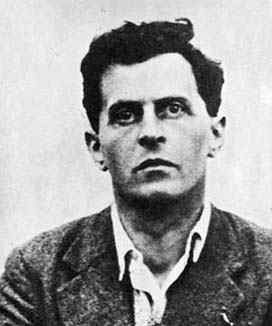






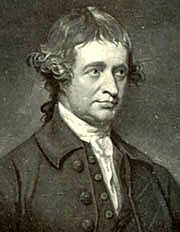


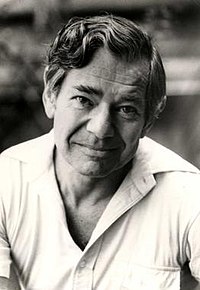










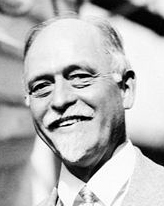



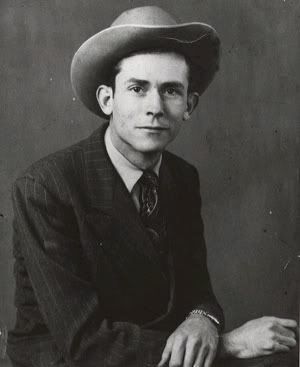







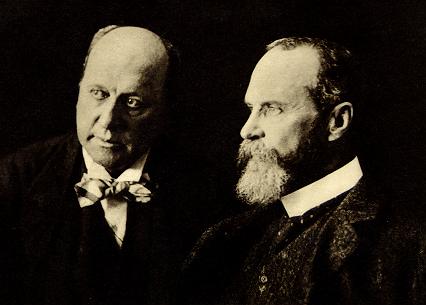


No comments:
Post a Comment